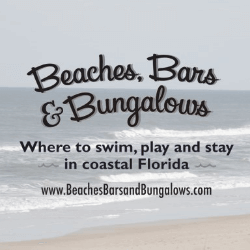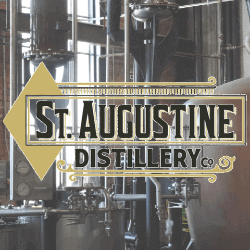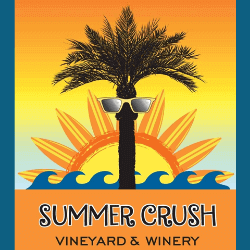EXPLORE MARATHON
KNOWN as the “Heart” of the Florida Keys, Marathon has retained the charm of its 19th century fishing village past while today being recognized as a premier boating destination. Situated roughly midway between the beginning of the Florida Keys and the end, the islands of Marathon include Boot Key, Knight Key, Hog Key, Vaca Key, Stirrup Key, Crawl and Little Crawl Key, East & West Sister’s Island, Deer Key and Fat Deer Key, Long Pine Key and Grassy Key. Separated from the lower Keys on the south end by the Seven Mile Bridge, Marathon’s laid-back attitude makes this modern-day boating community an extraordinary place to relax and unwind.Ready for some beach time? Sombrero Beach and Coco Plum Beach both with gorgeous white sand and turquoise water are each free for all to enjoy and whether you choose to kite board, snorkel, scuba, snuba, kayak or do nothing at all, you’ll likely appreciate the stunning natural beauty all around you.Working up an appetite yet? Here, fresh local seafood is an attraction all by itself and with more than four dozen restaurants of different specialties at your doorstep (many welcoming your four-legged dinner companions too) choosing where to eat may be the toughest decision you’ll need to make all day. The nightlife here starts early and ends late and with an annual Seafood Festival and continually growing calendar of events to entertain you, you’re sure to find exactly what you’re looking for.And at the end of the day whether you choose a Hotel, Motel, or Resort, Vacation Rental, Pet Friendly or RV/Campground property to call home during your stay, you’ll discover why visitors from around the corner and around the globe agree there’s nothing on the planet quite like the islands of Marathon. If you’re interested in reading more about the recent happenings, here’s a link to our Marathon Journal (blog) page.
Working up an appetite yet? Here, fresh local seafood is an attraction all by itself and with more than four dozen restaurants of different specialties at your doorstep (many welcoming your four-legged dinner companions too) choosing where to eat may be the toughest decision you’ll need to make all day. The nightlife here starts early and ends late and with an annual Seafood Festival and continually growing calendar of events to entertain you, you’re sure to find exactly what you’re looking for.And at the end of the day whether you choose a Hotel, Motel, or Resort, Vacation Rental, Pet Friendly or RV/Campground property to call home during your stay, you’ll discover why visitors from around the corner and around the globe agree there’s nothing on the planet quite like the islands of Marathon. If you’re interested in reading more about the recent happenings, here’s a link to our Marathon Journal (blog) page.
- Spectacular Marathon
- Bridge Section of “Old Seven”
- Glorious Sombrero Beach
Don’t Miss These…
 BAHIA HONDA KEY: About 15 minutes south of Marathon is perhaps one of the most spectacular beaches in all of Florida; the beach at Bahia Honda State Park. On the park’s 524 acres you can see more subtropical flowers than anywhere else in the Keys. The perimeter of the park is a tangled jungle of plants all carried here by sea birds, hurricanes, and ocean waves from the West Indies via the Caribbean Sea. The island itself is made of Key Largo limestone, derived from a coral reef similar to the present day reefs of the Keys. Several thousand years ago, a drop in the sea level exposed portions of the ancient reef, forming islands; Bahia Honda is the southernmost key where this formation is evident. This is a pic from our favorite spot and if you want to make your way here, once you get inside the park you have to make a right or a left, make a left then keep going through the back end of each parking lot until you can’t go any further. The park address is 36850 Overseas Hwy, Big Pine Key, 33043 – remember it’s a State Park so there will be a small entrance fee; we recommend an annual pass (good for 12 months from the time of purchase).
BAHIA HONDA KEY: About 15 minutes south of Marathon is perhaps one of the most spectacular beaches in all of Florida; the beach at Bahia Honda State Park. On the park’s 524 acres you can see more subtropical flowers than anywhere else in the Keys. The perimeter of the park is a tangled jungle of plants all carried here by sea birds, hurricanes, and ocean waves from the West Indies via the Caribbean Sea. The island itself is made of Key Largo limestone, derived from a coral reef similar to the present day reefs of the Keys. Several thousand years ago, a drop in the sea level exposed portions of the ancient reef, forming islands; Bahia Honda is the southernmost key where this formation is evident. This is a pic from our favorite spot and if you want to make your way here, once you get inside the park you have to make a right or a left, make a left then keep going through the back end of each parking lot until you can’t go any further. The park address is 36850 Overseas Hwy, Big Pine Key, 33043 – remember it’s a State Park so there will be a small entrance fee; we recommend an annual pass (good for 12 months from the time of purchase).
 BAHIA HONDA KEY: Located between Mile Markers 36 & 37 you’ll find Bahia Honda State Park and its fabulous award-winning beaches. Calusa Beach (the smallest) is on the north side of the island and is adjacent to the historic and frequently photographed Bahia Honda Bridge. Loggerhead Beach (the most shallow) is located on the south side of the island and is known for its large sand bar that’s just a few feet from shore. Sandspur Beach (the largest) is located on the southeast end of the island and features a spectacular mile-long beach. There are more than 500 acres here to enjoy including a gift shop, snack bar, and kayak rentals. Beach wheelchairs are also available upon request at the Ranger Station. This pic was taken from extraordinary Sandspur Beach and if you decide to come visit our hands-down favorite Florida State Park, make your way to 36850 Overseas Highway, 33043.
BAHIA HONDA KEY: Located between Mile Markers 36 & 37 you’ll find Bahia Honda State Park and its fabulous award-winning beaches. Calusa Beach (the smallest) is on the north side of the island and is adjacent to the historic and frequently photographed Bahia Honda Bridge. Loggerhead Beach (the most shallow) is located on the south side of the island and is known for its large sand bar that’s just a few feet from shore. Sandspur Beach (the largest) is located on the southeast end of the island and features a spectacular mile-long beach. There are more than 500 acres here to enjoy including a gift shop, snack bar, and kayak rentals. Beach wheelchairs are also available upon request at the Ranger Station. This pic was taken from extraordinary Sandspur Beach and if you decide to come visit our hands-down favorite Florida State Park, make your way to 36850 Overseas Highway, 33043.
 FAT DEER KEY: From Jerry Wilkinson’s research on KeysHistory.org we learned the origin of the term “Key” used to identify an island, is not well established. Although the Spanish normally used “isla” for island and “islet” for small island, in the New World they appear to use “cayo” and “cayuelo” for a very small island. Most believe Key is an adaptation of the Spanish word “cayo,’ used by the Taino Indians of Hispanola and Cuba. The English changed the word to “Cay” or “Kay.” Cay is pronounced by Americans as the letter “K,” but by Englishmen as the word ‘Key.’ English maps of the Keys made just prior to the Revolutionary War of 1776 used the word “Key.” Marathon is a 10-mile-long island community situated in the middle of the Florida Keys island chain and because of its location, is considered the heart of the Keys. It consists of many Keys one of which is the strikingly beautiful Fat Deer Key you see pictured here and if you want to come here and explore, you’ll find this Key located between mile markers 53.5 and 56.
FAT DEER KEY: From Jerry Wilkinson’s research on KeysHistory.org we learned the origin of the term “Key” used to identify an island, is not well established. Although the Spanish normally used “isla” for island and “islet” for small island, in the New World they appear to use “cayo” and “cayuelo” for a very small island. Most believe Key is an adaptation of the Spanish word “cayo,’ used by the Taino Indians of Hispanola and Cuba. The English changed the word to “Cay” or “Kay.” Cay is pronounced by Americans as the letter “K,” but by Englishmen as the word ‘Key.’ English maps of the Keys made just prior to the Revolutionary War of 1776 used the word “Key.” Marathon is a 10-mile-long island community situated in the middle of the Florida Keys island chain and because of its location, is considered the heart of the Keys. It consists of many Keys one of which is the strikingly beautiful Fat Deer Key you see pictured here and if you want to come here and explore, you’ll find this Key located between mile markers 53.5 and 56.
 PIGEON KEY: On early Spanish charts, Pigeon Key was known as Cayo Paloma (dove or pigeon key). Most believe it was likely named after the Keys white-crowned pigeon that according to FloridaKeysBest.com, migrated to the area from Cuba. There was little use of the 5.31-acre island until Henry Flagler needed it to complete the Seven Mile Bridge and the island served as a base camp for workers during construction. From 1908 to 1912, more than 400 workers lived in the railroad village on Pigeon Key, which had a post office, commissary, and one-room school. Today, explorers can spend the entire day on the island exploring the fully restored turn-of-the-century buildings, soaking up subtropical sun on a picnic, and snorkeling the tidal shoreline. We shot this pic near Mile Marker 47 at the former location of the visitor center & gift shop. According to the local historian we met inside, this is an original railroad car from Flagler’s railroad that actually served as his personal dining car (the ceiling inside is super cool). If you decide to come here and explore, make your way to 1 Knights Key Blvd., 33050.
PIGEON KEY: On early Spanish charts, Pigeon Key was known as Cayo Paloma (dove or pigeon key). Most believe it was likely named after the Keys white-crowned pigeon that according to FloridaKeysBest.com, migrated to the area from Cuba. There was little use of the 5.31-acre island until Henry Flagler needed it to complete the Seven Mile Bridge and the island served as a base camp for workers during construction. From 1908 to 1912, more than 400 workers lived in the railroad village on Pigeon Key, which had a post office, commissary, and one-room school. Today, explorers can spend the entire day on the island exploring the fully restored turn-of-the-century buildings, soaking up subtropical sun on a picnic, and snorkeling the tidal shoreline. We shot this pic near Mile Marker 47 at the former location of the visitor center & gift shop. According to the local historian we met inside, this is an original railroad car from Flagler’s railroad that actually served as his personal dining car (the ceiling inside is super cool). If you decide to come here and explore, make your way to 1 Knights Key Blvd., 33050.EXPLORERS’ NOTES: The railroad car has been relocated! Please call (305) 743-5999 before you go to make sure you’ve got the most current information; Pigeon Key is one of the 10 extraordinary destinations explorers will experience on the Passport to Explore A1A: Magical History Tour!
 SEVEN MILE BRIDGE: Iconic Seven Mile Bridge stretches out into the Florida Keys connecting Knight’s Key to Little Duck Key. At the time of its completion in 1982, it was the longest continuous concrete segmental bridge in the world, and is currently one of the longest bridges in America. Seven Mile Bridge actually consist of two bridges in the same location. The older bridge, originally known as the Knights Key-Pigeon Key-Moser Channel-Pacet Channel Bridge (rolls right off the tongue doesn’t it) was constructed from 1909-1912 as part of Henry Flagler’s Overseas Railroad. After the railroad sustained considerable damage during the Labor Day Hurricane of 1935, the bridge was refurbished for automobile use only. From 1978 to 1982, a new wider and sturdier Seven Mile Bridge was built right next to it. The total length of the new bridge is just under seven miles and is shorter than the original. We shot this pic in Marathon at the Sunset Grille & Raw Bar located at the northern end of the spectacular Seven Mile Bridge and if you decide to come here and explore, make your way to 7 Knights Key Blvd., 33050.
SEVEN MILE BRIDGE: Iconic Seven Mile Bridge stretches out into the Florida Keys connecting Knight’s Key to Little Duck Key. At the time of its completion in 1982, it was the longest continuous concrete segmental bridge in the world, and is currently one of the longest bridges in America. Seven Mile Bridge actually consist of two bridges in the same location. The older bridge, originally known as the Knights Key-Pigeon Key-Moser Channel-Pacet Channel Bridge (rolls right off the tongue doesn’t it) was constructed from 1909-1912 as part of Henry Flagler’s Overseas Railroad. After the railroad sustained considerable damage during the Labor Day Hurricane of 1935, the bridge was refurbished for automobile use only. From 1978 to 1982, a new wider and sturdier Seven Mile Bridge was built right next to it. The total length of the new bridge is just under seven miles and is shorter than the original. We shot this pic in Marathon at the Sunset Grille & Raw Bar located at the northern end of the spectacular Seven Mile Bridge and if you decide to come here and explore, make your way to 7 Knights Key Blvd., 33050.
 THE TURTLE HOSPITAL: Every year millions of us enjoy the abundance and natural beauty of Florida’s spectacular waters and coastlines. Regrettably, the ever-growing influx of our (human) activity has directly and negatively impacted the world’s sea turtle population. There are seven species of sea turtles throughout the entire world and five of the seven species are found in Florida. Located on the grounds of a former motel, this is a pic of The Turtle Hospital in Marathon, a fully functioning veterinary hospital with 23 individual tanks including a 100,000 gallon salt water pool. When you’re in the area stop by 2396 Overseas Highway, 33050 (near MM 48.5) and help support the hospital’s primary and critical mission to rescue and rehab sick and injured sea turtles so they can ultimately be released back into their natural habitat healthier and stronger than when they arrived.
THE TURTLE HOSPITAL: Every year millions of us enjoy the abundance and natural beauty of Florida’s spectacular waters and coastlines. Regrettably, the ever-growing influx of our (human) activity has directly and negatively impacted the world’s sea turtle population. There are seven species of sea turtles throughout the entire world and five of the seven species are found in Florida. Located on the grounds of a former motel, this is a pic of The Turtle Hospital in Marathon, a fully functioning veterinary hospital with 23 individual tanks including a 100,000 gallon salt water pool. When you’re in the area stop by 2396 Overseas Highway, 33050 (near MM 48.5) and help support the hospital’s primary and critical mission to rescue and rehab sick and injured sea turtles so they can ultimately be released back into their natural habitat healthier and stronger than when they arrived.
 VACA KEY: From Sea Turtle Conservancy (conserveturtles.org) we learned that unlike baby alligators, which are freed from their nest by their mother, sea turtle hatchlings must do it all themselves. To break open their shells, hatchlings use a temporary, sharp egg-tooth, called a “caruncle.” The caruncle is an extension of the upper jaw that falls off soon after birth. Digging out of the nest is a group effort that can take several days and once they decide to burst out, they erupt from the nest cavity as a group. The little turtles orient themselves to the brightest horizon, and then dash toward the sea. The obstacles are so numerous for baby turtles that only about one in 1,000 survives to adulthood. With nesting season once again upon us, remember it’s illegal to harm, harass or take sea turtles, their eggs and hatchlings, including getting too close to a nesting female and if you see anyone doing it, here’s the number for the FWC’s Wildlife Alert Hotline 888-404-3922 please take a minute now to add it to your cell. We took this pic on fabulous Fat Deer Key and thought it was a great illustration of the visual clues loggerheads and green turtles leave to alert us that nesting activity may be nearby.
VACA KEY: From Sea Turtle Conservancy (conserveturtles.org) we learned that unlike baby alligators, which are freed from their nest by their mother, sea turtle hatchlings must do it all themselves. To break open their shells, hatchlings use a temporary, sharp egg-tooth, called a “caruncle.” The caruncle is an extension of the upper jaw that falls off soon after birth. Digging out of the nest is a group effort that can take several days and once they decide to burst out, they erupt from the nest cavity as a group. The little turtles orient themselves to the brightest horizon, and then dash toward the sea. The obstacles are so numerous for baby turtles that only about one in 1,000 survives to adulthood. With nesting season once again upon us, remember it’s illegal to harm, harass or take sea turtles, their eggs and hatchlings, including getting too close to a nesting female and if you see anyone doing it, here’s the number for the FWC’s Wildlife Alert Hotline 888-404-3922 please take a minute now to add it to your cell. We took this pic on fabulous Fat Deer Key and thought it was a great illustration of the visual clues loggerheads and green turtles leave to alert us that nesting activity may be nearby.
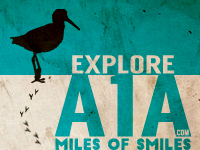
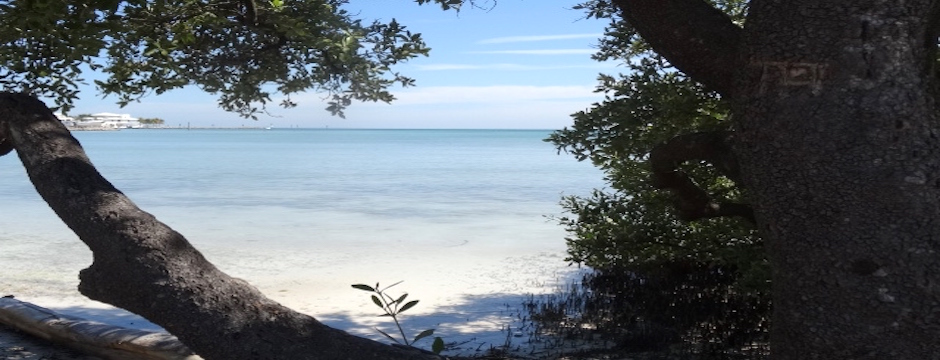
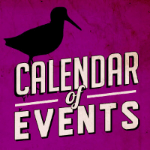
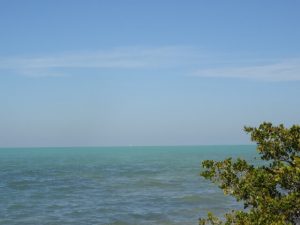

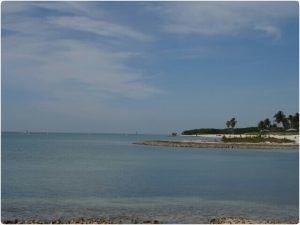
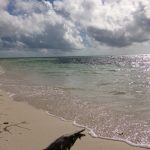 BAHIA HONDA KEY: About 15 minutes south of Marathon is perhaps one of the most spectacular beaches in all of Florida; the beach at Bahia Honda State Park. On the park’s 524 acres you can see more subtropical flowers than anywhere else in the Keys. The perimeter of the park is a tangled jungle of plants all carried here by sea birds, hurricanes, and ocean waves from the West Indies via the Caribbean Sea. The island itself is made of Key Largo limestone, derived from a coral reef similar to the present day reefs of the Keys. Several thousand years ago, a drop in the sea level exposed portions of the ancient reef, forming islands; Bahia Honda is the southernmost key where this formation is evident. This is a pic from our favorite spot and if you want to make your way here, once you get inside the park you have to make a right or a left, make a left then keep going through the back end of each parking lot until you can’t go any further. The park address is 36850 Overseas Hwy, Big Pine Key, 33043 – remember it’s a State Park so there will be a small entrance fee; we recommend an annual pass (good for 12 months from the time of purchase).
BAHIA HONDA KEY: About 15 minutes south of Marathon is perhaps one of the most spectacular beaches in all of Florida; the beach at Bahia Honda State Park. On the park’s 524 acres you can see more subtropical flowers than anywhere else in the Keys. The perimeter of the park is a tangled jungle of plants all carried here by sea birds, hurricanes, and ocean waves from the West Indies via the Caribbean Sea. The island itself is made of Key Largo limestone, derived from a coral reef similar to the present day reefs of the Keys. Several thousand years ago, a drop in the sea level exposed portions of the ancient reef, forming islands; Bahia Honda is the southernmost key where this formation is evident. This is a pic from our favorite spot and if you want to make your way here, once you get inside the park you have to make a right or a left, make a left then keep going through the back end of each parking lot until you can’t go any further. The park address is 36850 Overseas Hwy, Big Pine Key, 33043 – remember it’s a State Park so there will be a small entrance fee; we recommend an annual pass (good for 12 months from the time of purchase).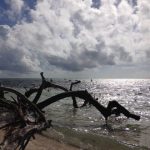 BAHIA HONDA KEY: Located between Mile Markers 36 & 37 you’ll find Bahia Honda State Park and its fabulous award-winning beaches. Calusa Beach (the smallest) is on the north side of the island and is adjacent to the historic and frequently photographed Bahia Honda Bridge. Loggerhead Beach (the most shallow) is located on the south side of the island and is known for its large sand bar that’s just a few feet from shore. Sandspur Beach (the largest) is located on the southeast end of the island and features a spectacular mile-long beach. There are more than 500 acres here to enjoy including a gift shop, snack bar, and kayak rentals. Beach wheelchairs are also available upon request at the Ranger Station. This pic was taken from extraordinary Sandspur Beach and if you decide to come visit our hands-down favorite Florida State Park, make your way to 36850 Overseas Highway, 33043.
BAHIA HONDA KEY: Located between Mile Markers 36 & 37 you’ll find Bahia Honda State Park and its fabulous award-winning beaches. Calusa Beach (the smallest) is on the north side of the island and is adjacent to the historic and frequently photographed Bahia Honda Bridge. Loggerhead Beach (the most shallow) is located on the south side of the island and is known for its large sand bar that’s just a few feet from shore. Sandspur Beach (the largest) is located on the southeast end of the island and features a spectacular mile-long beach. There are more than 500 acres here to enjoy including a gift shop, snack bar, and kayak rentals. Beach wheelchairs are also available upon request at the Ranger Station. This pic was taken from extraordinary Sandspur Beach and if you decide to come visit our hands-down favorite Florida State Park, make your way to 36850 Overseas Highway, 33043. FAT DEER KEY: From Jerry Wilkinson’s research on KeysHistory.org we learned the origin of the term “Key” used to identify an island, is not well established. Although the Spanish normally used “isla” for island and “islet” for small island, in the New World they appear to use “cayo” and “cayuelo” for a very small island. Most believe Key is an adaptation of the Spanish word “cayo,’ used by the Taino Indians of Hispanola and Cuba. The English changed the word to “Cay” or “Kay.” Cay is pronounced by Americans as the letter “K,” but by Englishmen as the word ‘Key.’ English maps of the Keys made just prior to the Revolutionary War of 1776 used the word “Key.” Marathon is a 10-mile-long island community situated in the middle of the Florida Keys island chain and because of its location, is considered the heart of the Keys. It consists of many Keys one of which is the strikingly beautiful Fat Deer Key you see pictured here and if you want to come here and explore, you’ll find this Key located between mile markers 53.5 and 56.
FAT DEER KEY: From Jerry Wilkinson’s research on KeysHistory.org we learned the origin of the term “Key” used to identify an island, is not well established. Although the Spanish normally used “isla” for island and “islet” for small island, in the New World they appear to use “cayo” and “cayuelo” for a very small island. Most believe Key is an adaptation of the Spanish word “cayo,’ used by the Taino Indians of Hispanola and Cuba. The English changed the word to “Cay” or “Kay.” Cay is pronounced by Americans as the letter “K,” but by Englishmen as the word ‘Key.’ English maps of the Keys made just prior to the Revolutionary War of 1776 used the word “Key.” Marathon is a 10-mile-long island community situated in the middle of the Florida Keys island chain and because of its location, is considered the heart of the Keys. It consists of many Keys one of which is the strikingly beautiful Fat Deer Key you see pictured here and if you want to come here and explore, you’ll find this Key located between mile markers 53.5 and 56. PIGEON KEY: On early Spanish charts, Pigeon Key was known as Cayo Paloma (dove or pigeon key). Most believe it was likely named after the Keys white-crowned pigeon that according to FloridaKeysBest.com, migrated to the area from Cuba. There was little use of the 5.31-acre island until Henry Flagler needed it to complete the Seven Mile Bridge and the island served as a base camp for workers during construction. From 1908 to 1912, more than 400 workers lived in the railroad village on Pigeon Key, which had a post office, commissary, and one-room school. Today, explorers can spend the entire day on the island exploring the fully restored turn-of-the-century buildings, soaking up subtropical sun on a picnic, and snorkeling the tidal shoreline. We shot this pic near Mile Marker 47 at the former location of the visitor center & gift shop. According to the local historian we met inside, this is an original railroad car from Flagler’s railroad that actually served as his personal dining car (the ceiling inside is super cool). If you decide to come here and explore, make your way to 1 Knights Key Blvd., 33050.
PIGEON KEY: On early Spanish charts, Pigeon Key was known as Cayo Paloma (dove or pigeon key). Most believe it was likely named after the Keys white-crowned pigeon that according to FloridaKeysBest.com, migrated to the area from Cuba. There was little use of the 5.31-acre island until Henry Flagler needed it to complete the Seven Mile Bridge and the island served as a base camp for workers during construction. From 1908 to 1912, more than 400 workers lived in the railroad village on Pigeon Key, which had a post office, commissary, and one-room school. Today, explorers can spend the entire day on the island exploring the fully restored turn-of-the-century buildings, soaking up subtropical sun on a picnic, and snorkeling the tidal shoreline. We shot this pic near Mile Marker 47 at the former location of the visitor center & gift shop. According to the local historian we met inside, this is an original railroad car from Flagler’s railroad that actually served as his personal dining car (the ceiling inside is super cool). If you decide to come here and explore, make your way to 1 Knights Key Blvd., 33050.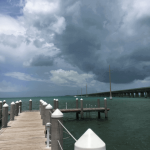 SEVEN MILE BRIDGE: Iconic Seven Mile Bridge stretches out into the Florida Keys connecting Knight’s Key to Little Duck Key. At the time of its completion in 1982, it was the longest continuous concrete segmental bridge in the world, and is currently one of the longest bridges in America. Seven Mile Bridge actually consist of two bridges in the same location. The older bridge, originally known as the Knights Key-Pigeon Key-Moser Channel-Pacet Channel Bridge (rolls right off the tongue doesn’t it) was constructed from 1909-1912 as part of Henry Flagler’s Overseas Railroad. After the railroad sustained considerable damage during the Labor Day Hurricane of 1935, the bridge was refurbished for automobile use only. From 1978 to 1982, a new wider and sturdier Seven Mile Bridge was built right next to it. The total length of the new bridge is just under seven miles and is shorter than the original. We shot this pic in Marathon at the Sunset Grille & Raw Bar located at the northern end of the spectacular Seven Mile Bridge and if you decide to come here and explore, make your way to 7 Knights Key Blvd., 33050.
SEVEN MILE BRIDGE: Iconic Seven Mile Bridge stretches out into the Florida Keys connecting Knight’s Key to Little Duck Key. At the time of its completion in 1982, it was the longest continuous concrete segmental bridge in the world, and is currently one of the longest bridges in America. Seven Mile Bridge actually consist of two bridges in the same location. The older bridge, originally known as the Knights Key-Pigeon Key-Moser Channel-Pacet Channel Bridge (rolls right off the tongue doesn’t it) was constructed from 1909-1912 as part of Henry Flagler’s Overseas Railroad. After the railroad sustained considerable damage during the Labor Day Hurricane of 1935, the bridge was refurbished for automobile use only. From 1978 to 1982, a new wider and sturdier Seven Mile Bridge was built right next to it. The total length of the new bridge is just under seven miles and is shorter than the original. We shot this pic in Marathon at the Sunset Grille & Raw Bar located at the northern end of the spectacular Seven Mile Bridge and if you decide to come here and explore, make your way to 7 Knights Key Blvd., 33050.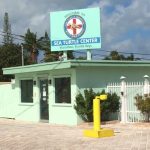 THE TURTLE HOSPITAL: Every year millions of us enjoy the abundance and natural beauty of Florida’s spectacular waters and coastlines. Regrettably, the ever-growing influx of our (human) activity has directly and negatively impacted the world’s sea turtle population. There are seven species of sea turtles throughout the entire world and five of the seven species are found in Florida. Located on the grounds of a former motel, this is a pic of The Turtle Hospital in Marathon, a fully functioning veterinary hospital with 23 individual tanks including a 100,000 gallon salt water pool. When you’re in the area stop by 2396 Overseas Highway, 33050 (near MM 48.5) and help support the hospital’s primary and critical mission to rescue and rehab sick and injured sea turtles so they can ultimately be released back into their natural habitat healthier and stronger than when they arrived.
THE TURTLE HOSPITAL: Every year millions of us enjoy the abundance and natural beauty of Florida’s spectacular waters and coastlines. Regrettably, the ever-growing influx of our (human) activity has directly and negatively impacted the world’s sea turtle population. There are seven species of sea turtles throughout the entire world and five of the seven species are found in Florida. Located on the grounds of a former motel, this is a pic of The Turtle Hospital in Marathon, a fully functioning veterinary hospital with 23 individual tanks including a 100,000 gallon salt water pool. When you’re in the area stop by 2396 Overseas Highway, 33050 (near MM 48.5) and help support the hospital’s primary and critical mission to rescue and rehab sick and injured sea turtles so they can ultimately be released back into their natural habitat healthier and stronger than when they arrived. VACA KEY: From Sea Turtle Conservancy (conserveturtles.org) we learned that unlike baby alligators, which are freed from their nest by their mother, sea turtle hatchlings must do it all themselves. To break open their shells, hatchlings use a temporary, sharp egg-tooth, called a “caruncle.” The caruncle is an extension of the upper jaw that falls off soon after birth. Digging out of the nest is a group effort that can take several days and once they decide to burst out, they erupt from the nest cavity as a group. The little turtles orient themselves to the brightest horizon, and then dash toward the sea. The obstacles are so numerous for baby turtles that only about one in 1,000 survives to adulthood. With nesting season once again upon us, remember it’s illegal to harm, harass or take sea turtles, their eggs and hatchlings, including getting too close to a nesting female and if you see anyone doing it, here’s the number for the FWC’s Wildlife Alert Hotline 888-404-3922 please take a minute now to add it to your cell. We took this pic on fabulous Fat Deer Key and thought it was a great illustration of the visual clues loggerheads and green turtles leave to alert us that nesting activity may be nearby.
VACA KEY: From Sea Turtle Conservancy (conserveturtles.org) we learned that unlike baby alligators, which are freed from their nest by their mother, sea turtle hatchlings must do it all themselves. To break open their shells, hatchlings use a temporary, sharp egg-tooth, called a “caruncle.” The caruncle is an extension of the upper jaw that falls off soon after birth. Digging out of the nest is a group effort that can take several days and once they decide to burst out, they erupt from the nest cavity as a group. The little turtles orient themselves to the brightest horizon, and then dash toward the sea. The obstacles are so numerous for baby turtles that only about one in 1,000 survives to adulthood. With nesting season once again upon us, remember it’s illegal to harm, harass or take sea turtles, their eggs and hatchlings, including getting too close to a nesting female and if you see anyone doing it, here’s the number for the FWC’s Wildlife Alert Hotline 888-404-3922 please take a minute now to add it to your cell. We took this pic on fabulous Fat Deer Key and thought it was a great illustration of the visual clues loggerheads and green turtles leave to alert us that nesting activity may be nearby.